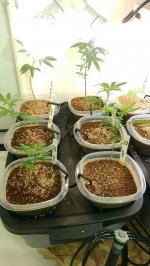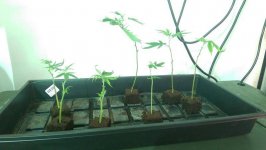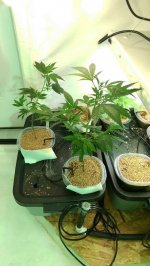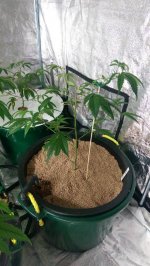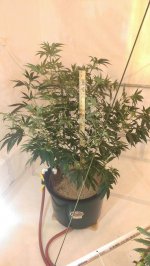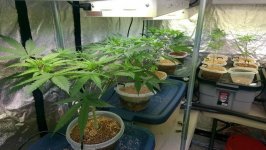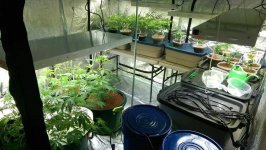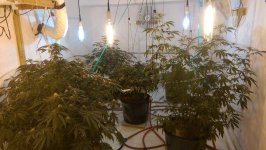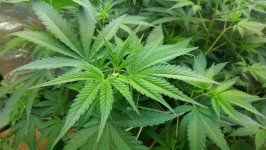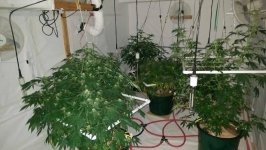omg! you've got the dreaded root disease "plantus giganticus"! it only occurs in ppk's!
that plant looks great! even though it's going to die. sometime.
it's one of your best so far. i like the shape. how many weeks veg did it take to reach 41"?
also it looks like the medium is about perfectly tuned for moisture.
for the folks at home can you go over your choice of medium, air gap, duration of flood, type of flood (wave or full), and the interval you are using between floods?
this tuning ability allows each individual grower to fine tune root zone moisture content to their particular set of environmental variables.
and moving anywhere is not the answer to bug control, especially here in oregon. they should rename I-5 "the Great Mite Highway". millions of them every day are traveling up and down the road in the trunks of cars. insuring that their kind will be perpetuated forever.
nice job!
that plant looks great! even though it's going to die. sometime.
it's one of your best so far. i like the shape. how many weeks veg did it take to reach 41"?
also it looks like the medium is about perfectly tuned for moisture.
for the folks at home can you go over your choice of medium, air gap, duration of flood, type of flood (wave or full), and the interval you are using between floods?
this tuning ability allows each individual grower to fine tune root zone moisture content to their particular set of environmental variables.
and moving anywhere is not the answer to bug control, especially here in oregon. they should rename I-5 "the Great Mite Highway". millions of them every day are traveling up and down the road in the trunks of cars. insuring that their kind will be perpetuated forever.
nice job!

